Bettas are usually aggressive fish. But this does not always mean they can’t live with other fish species in a community tank.
Ghost shrimp are popular tank mates for betta fish. They are docile and keep to themselves at the bottom of the tank.
But is keeping ghost shrimp and betta fish in the same tank safe for the small crustaceans?
Keeping ghost shrimp and a betta fish together is safe if you provide a spacious tank and many hiding places. You must also consider the personality of your betta fish. An aggressive betta is never a good candidate for a community tank.

Table of Contents
Can Ghost Shrimp and Bettas Have a Peaceful Coexistence?
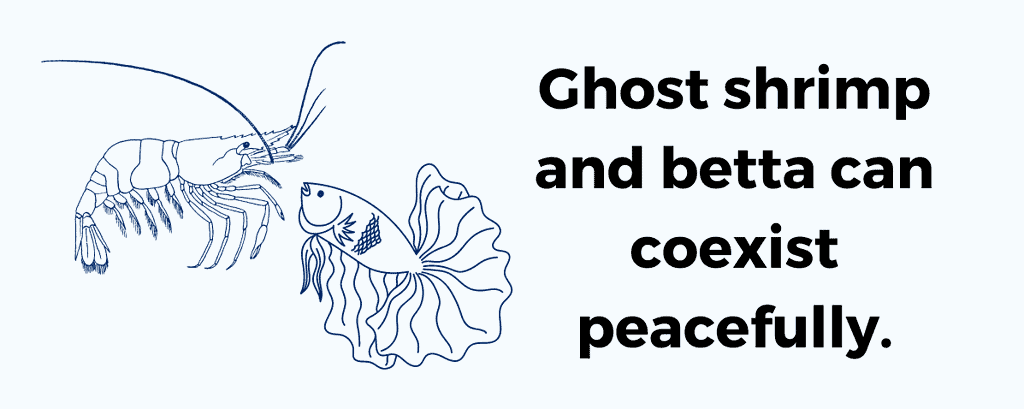
There is no need to worry if your betta is lonely. Betta fish do not mind their solitary existence.
Keeping more than one betta in a tank stresses the fish and leads to aggressive fighting.
But there are some benefits to having betta fish tank mates.
Some fish species are excellent cleaners. The larger community tank also provides a healthier environment for your betta.
Let’s take a closer look at some factors affecting a peaceful coexistence between ghost shrimp and betta fish.
Will the Betta Fish Attack the Ghost Shrimp?
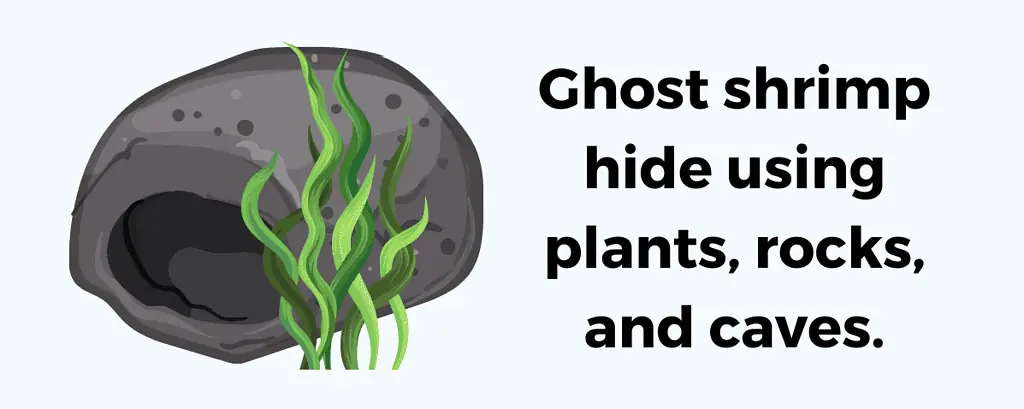
Ghost shrimp are one of the largest dwarf shrimp species. They grow between 1.5-2″ inches long, making them less likely to become a meal for a betta fish.
These shrimp are also known as glass shrimp because of their transparent bodies. The lack of bright colors makes ghost shrimp less of a target for aggressive behavior from a betta.
Since ghost shrimp spend most of their time on the bottom of the tank, they are usually unnoticed by the betta.
Ghost shrimp are also good at hiding. They use aquatic plants, rocks, and caves to their advantage when they sense danger.
But, even with these defensive strategies, there is no guarantee your betta fish will not attack the ghost shrimp.
A hungry betta may see the ghost shrimp as a meal. Young ghost shrimp are especially vulnerable due to their smaller body size.
Anything smaller than a betta fish’s mouth may become a meal.
Avoid this terrible outcome by providing your betta fish with a nutritious diet and a regular feeding schedule.
Even with the perfect setup, your ghost shrimp are more prone to attacks from an aggressive betta fish.
If your betta flares and displays other signs of aggression, reconsider adding ghost shrimp to the tank.
Is It Safe for the Betta Fish To Eat Ghost Shrimp?
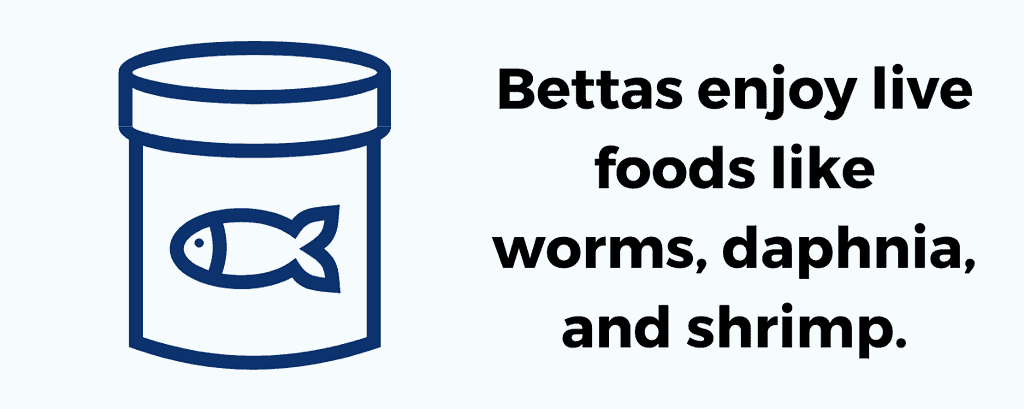
Bettas are carnivorous fish and enjoy live foods along with their staple diet of pellets.
These live foods usually include blood worms, daphnia, and, as you might have guessed, shrimp.
It is completely safe for your betta to eat ghost shrimp. Most ghost shrimp breeders raise them as feeders for larger fish.
Ghost shrimp are a good source of protein, vitamins, and minerals when fed a healthy diet.
Of course, this is not ideal if you plan on raising ghost shrimp in the same tank as your betta.
Adult ghost shrimp have the advantage of being larger than other dwarf species like cherry shrimp.
Ghost shrimp also lack the bright red coloring of cherry shrimp. Their transparent bodies make them less appealing to betta fish.
Baby and juvenile ghost shrimp have the highest risk of becoming your betta’s next meal. Your betta may also eat ghost shrimp eggs.
How Many Ghost Shrimp Can You Keep With One Betta Fish?
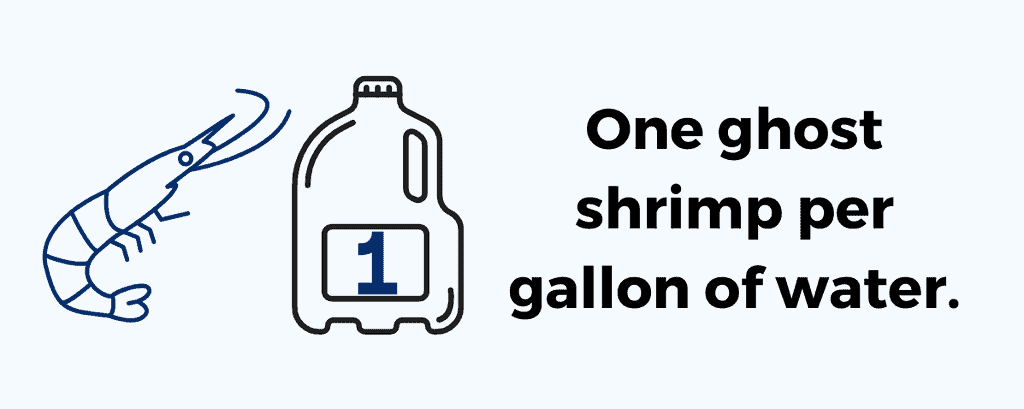
Determining the number of ghost shrimp for your betta tank depends on several factors.
First, you must consider the size of your tank. The general rule of thumb is one ghost shrimp per gallon of water.
This means in a 10-gallon tank you could keep 4-5 ghost shrimp with a betta. You must consider the space needed for aquatic plants and hiding spots.
Avoid overcrowding ghost shrimp in your tank. The waste they produce may crash your nitrogen cycle.
Ghost shrimp are prolific breeders. But your betta will likely keep the population from growing too large.
Ghost shrimp do well alone but feel more secure in a small group.
Something else you must consider is your betta’s temperament. An aggressive betta fish is a severe threat to ghost shrimp.
Pay attention to your betta’s behavior. When your betta chases or bullies the ghost shrimp, this is a bad sign.
If this aggressive behavior continues, your ghost shrimp is unlikely to survive.
A more timid betta fish has no interest in bothering the ghost shrimp.
Ghost shrimp are also sensitive to sudden changes in their environment.
Many fish stores raise ghost shrimp as a food source for larger fish. The ghost shrimp may not receive the best possible care.
Some ghost shrimp may not survive the trip from the pet store to your aquarium.
Check your ghost shrimp for a few days after bringing them home. Be prepared if some of the shrimp do not live past the first few days.
Will the Ghost Shrimp Clean the Betta Fish’s Tank?
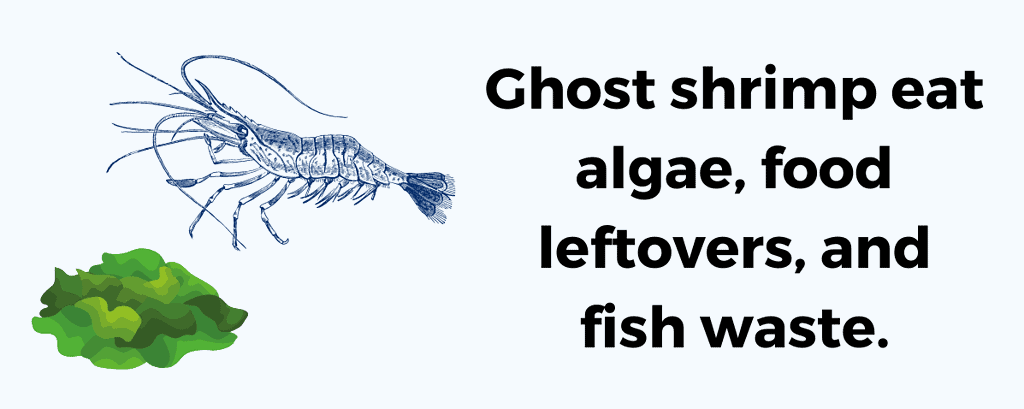
Ghost shrimp clean substrate by eating algae, leftover food, and fish waste.
These small crustaceans are not considered algae eaters. But they prevent algae outbreaks in the tank.
Ghost shrimp do not solve already-existing algae problems.
Consider adding snails or otocinclus catfish to keep algae at bay.
If you maintain a clean tank, you must supplement your ghost shrimp’s diet with algae wafers.
The Best Tank Setup for Ghost Shrimp and Betta Fish
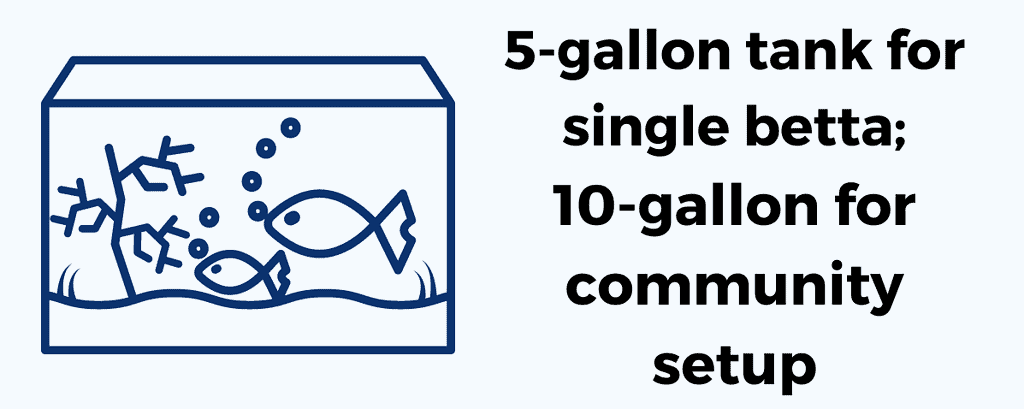
Your tank setup is essential to a successful community tank for ghost shrimp and betta fish.
An unhealthy environment causes health issues in your fish. Poor water quality also increases stress and aggression.
Setting up ideal tank conditions is not a complicated process. But there are some things you need to know.
What Is the Best Tank Size for Ghost Shrimp and Betta Fish?
A 5-gallon tank works well for a single betta fish or a group of ghost shrimp. But if you want a community setup, you need a larger tank.
We recommend at least a 10-gallon tank when adding tank mates in with a betta fish.
Betta fish are territorial and need their own space to relax away from other fish.
Your betta sees the entire tank as its territory. This makes introducing ghost shrimp a challenge.
Ease the transition by removing your betta to a separate tank for a short time.
Rearrange the larger tank and add the ghost shrimp first. This gives the ghost shrimp time to explore and discover hiding places.
Once the ghost shrimp are comfortable, you may re-introduce the betta back into the tank. Watch for aggressive behavior and prepare to remove the betta fish if necessary.
A larger tank also provides enough room for adding lots of hiding places and aquarium plants. Ghost shrimp need adequate hiding spots for more security.
Maintaining consistent water parameters is also easier in a larger tank.
Best Plants and Decorations for a Ghost Shrimp/Betta Tank

Adding lots of plant life creates a more natural tank environment for your fish.
You may use artificial plants, but live plants are better.
Sharp-edged plastic plants cause torn fins and other injuries in betta fish. If you choose artificial plants, ensure they are silk.
Some excellent beginner aquarium plants include:
- Java moss
- Anubias
- Java fern
- Amazon sword
- Hornwort
Along with lots of plant life, provide adequate hiding spots for your ghost shrimp and betta.
Ghost shrimp are particularly vulnerable right after molting and need places where they can hide.
Choose decorations with smooth edges and textures.
Always mind your placement of tank decorations. It is not uncommon for betta fish to get stuck in narrow places.
If your betta gets stuck and cannot reach the surface for fresh air, it may die.
Smooth rocks, coconut caves, and pieces of driftwood are excellent choices.
You may choose either sand or smooth aquarium gravel as your tank substrate.
Ghost shrimp and bettas do well in either type of substrate, but gravel is usually preferred. Aquarium gravel is easy to clean and less likely for your fish to ingest on accident.
Aquarium gravel comes in several colors as well. A darker substrate makes finding your transparent shrimp a bit easier.
Choosing the Right Filter for a Ghost Shrimp and Betta Tank
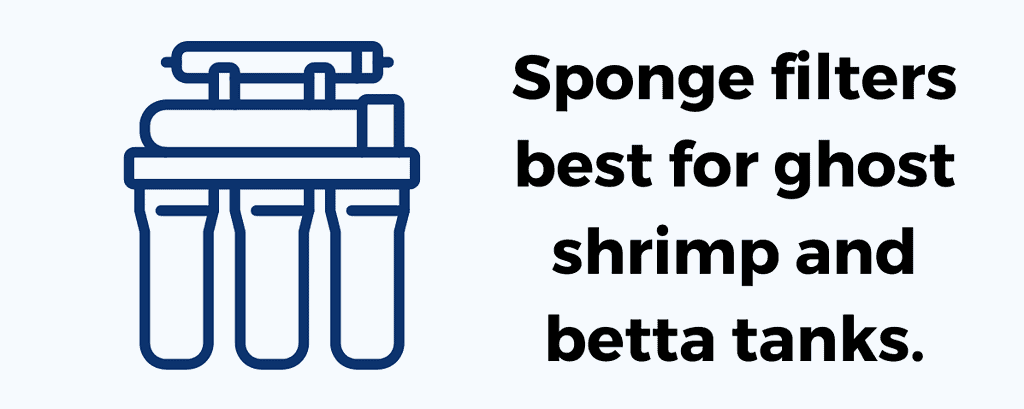
A sponge filter is the best filter for a tank with ghost shrimp and a betta fish.
Sponge filters remove bacteria and circulate the water without creating a strong water current.
A good filter circulates all the water in the tank 4-6 times per hour. This rating is the GPH, or gallons per hour, listed on the filter packaging.
Choose a filter with a GPH rating of more than four times the size of your tank. For example, you need a filter with at least a rating of 40 GPH for a 10-gallon tank.
Betta fish have a labyrinth organ. The labyrinth organ allows them to breathe air from the surface when they need more oxygen.
Ghost shrimp do not have a labyrinth organ and spend most of their time at the bottom of the tank.
If you have concerns about the oxygen levels in your tank, consider adding an air stone or air bubbler. These devices increase oxygen in the tank by creating air bubbles.
Do Ghost Shrimp and Betta Fish Need a Heater in the Tank?

Ghost shrimp and betta fish thrive in warm waters. You must add a quality aquarium heater to maintain these higher temperatures.
The heater must provide 3-5 watts for every gallon of water. A 30-50 watt heater is ideal for a 10-gallon tank.
Place the heater near the filter, so the warmth circulates throughout the tank.
Most aquarium heaters have a built-in thermostat but are not always accurate. Use a separate thermometer for checking tank temperatures.
Ideal Water Conditions for Ghost Shrimp and Betta Fish

When creating ideal water conditions for your ghost shrimp and betta, you must understand the needs of both species.
Bettas are tropical fish native to rice paddies and shallow waters in Southeast Asia. These brightly-colored fish prefer water temperatures between 78-80° degrees Fahrenheit (27° C).
The native habitat of ghost shrimp is in North America, in the Southeastern United States. They thrive best in tropical water temperatures ranging from 72-82° degrees Fahrenheit (28° C).
Since there is an overlap in water temperatures for these two species, the best tank temperature is around 78° degrees Fahrenheit (26° C).
The warm water helps ghost shrimp and bettas with digestion and immune system health. Warmer temperatures also encourage the breeding of ghost shrimp.
Cold water increases the risk of health issues and may cause death.
Always aim for stable temperatures. Sudden fluctuations cause issues like temperature shock.
Do not let temperatures exceed the recommended 78° degrees Fahrenheit (26° C). Temperatures too far above 75° degrees Fahrenheit (24° C) may cause issues with molting.
Bettas can tolerate neutral water, while ghost shrimp need more alkaline water. Keeping the pH levels in the tank at a neutral 7.0 is the best option.
You may also create brackish water conditions by adding Indian almond leaves to the tank.
Maintain slow water movement in the tank with a sponge filter. Ghost shrimp and bettas have difficulty swimming in fast currents.
How To Keep the Tank Clean and Maintain Water Parameters

Weekly partial water changes help maintain safe water parameters.
Remove around 20% of the water and treat the new water with a dechlorinator before adding it to the tank.
Aquarium testing kits show pH, ammonia, nitrite, and nitrate levels in the tank water.
Appropriate pH levels are close to neutral, 7.0 on the scale.
Ammonia and nitrite levels must be 0 ppm.
Ghost shrimp and bettas are sensitive to these toxins. Prolonged exposure may cause illness and even death.
There is a little more wiggle room with nitrate levels. Nitrate levels less than 40 ppm are safe for your fish.
In a cycled tank, nitrate occurs when beneficial bacteria break down ammonia and nitrite. Live plants help reduce nitrate levels.
Clean excess algae from the sides of the tank with an algae scraper. Ghost shrimp prevent algae buildup on the substrate but do not do much for the glass sides.
If your filter media becomes clogged, rinse it in the tank water removed during a water change. Rinsing the filter media with untreated tap water introduces toxic chlorine into the tank.
Any time your fish are sick, treat them with medications in a separate tank. Ghost shrimp are especially sensitive to copper and could die if they are exposed to it.
Ghost shrimp go through the molting process as they grow larger. When they complete the molting process, they leave behind their shell.
Do not remove these empty shells from the tank. Most of the time, ghost shrimp eat the shells for a boost of calcium.
Feeding Ghost Shrimp and Bettas in the Same Tank

Feeding fish in a community tank is challenging with a betta.
Understanding the feeding habits of your ghost shrimp and betta fish makes the process much easier.
Feeding Habits of Ghost Shrimp and Betta Fish
Betta fish are greedy eaters and may steal your ghost shrimp’s food.
We recommend feeding your betta first to distract it while you feed your ghost shrimp.
The upturned mouth of bettas is for feeding near the surface. Your betta is less likely to scavenge food on the bottom of the tank unless it is starving.
Ghost shrimp are bottom dwellers and feed on edible materials found on the substrate. They will not go to the surface and steal your betta’s food.
How Often Should You Feed Ghost Shrimp and Betta Fish?

Betta fish need daily feedings with one day of the week for fasting.
Feeding your betta two small meals daily helps digestion and prevents bloating. A day of fasting allows for the digestion of any leftover food in the stomach.
If you have several ghost shrimp, feeding them one small meal daily is safe. If there is a lot of leftover food, consider reducing the amount or feeding every other day.
Avoid overfeeding your ghost shrimp and betta fish by keeping the food portions small.
Overfeeding causes bloating and swim bladder disorder in bettas.
Excess food in the water also causes dangerous bacteria buildup and ammonia spikes. Ghost shrimp are very sensitive, and these toxins may be deadly for them.
Removing uneaten food after a few hours prevents toxins from building up in the water.
What Do Ghost Shrimp and Betta Fish Eat?

Bettas are carnivorous fish and need a diet rich in animal proteins.
Choose a high-quality floating pellet with at least 35% of crude protein.
Add variety to your betta’s pellet diet with live, freeze-dried, or frozen foods, such as:
- Mosquito larvae
- Blood worms
- Daphnia
Feed these types of foods in place of a pellet meal 3-4 times per week.
If you want to learn more about feeding your betta, check out our article on the best foods for betta fish.
Ghost shrimp are scavengers and eat anything they find on the substrate. They may even eat their shells after the molting process.
But, you must still provide them with a high-quality diet for proper nutrition.
Feed your ghost shrimp fish flakes, shrimp pellets, or small sinking algae wafers designed for bottom feeders. This ensures your ghost shrimp receive vital nutrients for healthy growth.
Breeding Considerations in a Ghost Shrimp and Betta Tank

Keep in mind the breeding habits of your ghost shrimp. A single female ghost shrimp may produce 20-30 eggs every time she breeds.
Your betta will likely eat most of these ghost shrimp eggs. This prevents a population explosion of ghost shrimp.
Ghost shrimp have a short lifespan of a little over one year in ideal conditions. If your betta eats the eggs, consider a separate ghost shrimp breeding tank.
When your female ghost shrimp carry eggs, they appear green under their bellies.
Remove the male ghost shrimp from the breeding tank shortly after mating. The females may stay in the tank until the eggs hatch.
Adult ghost shrimp may eat the eggs or baby shrimp if they are not removed from the breeding tank.
Feed the baby shrimp powdered foods made for small fry.
After five weeks, the young shrimp grow to their adult size, and you may transfer them into the main tank.
Nothing Scary About Keeping Ghost Shrimp With Betta Fish
With some research and planning, there is a greater chance for a successful pairing of ghost shrimp and betta fish.
Provide a variety of aquatic plants and hiding spots for a more natural environment.
Establish a regular tank cleaning routine and test water parameters for the health of your fish.
Well-fed fish are usually less aggressive, so ensure your ghost shrimp and betta fish have a nutritious diet.
By following these tips, your ghost shrimp and betta fish will have a peaceful coexistence.
For more on shrimp and betta fish in general, check out our other guide here.


